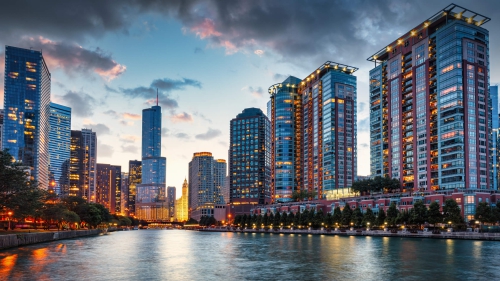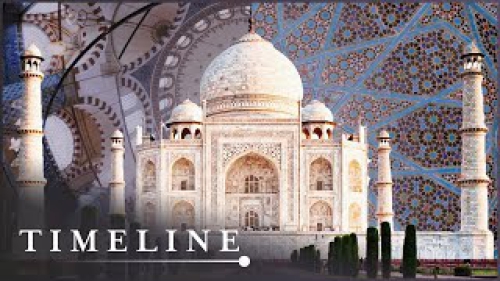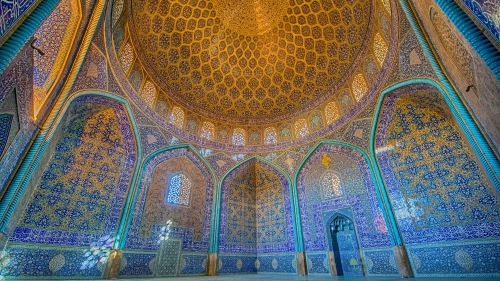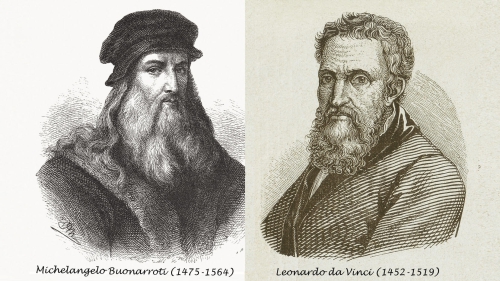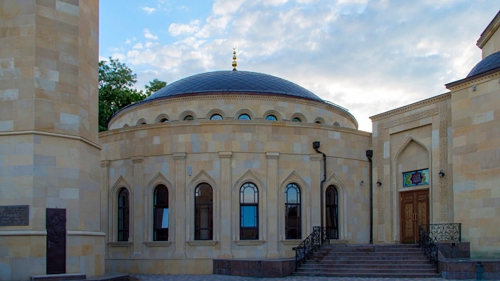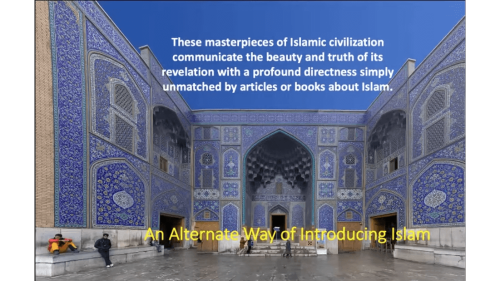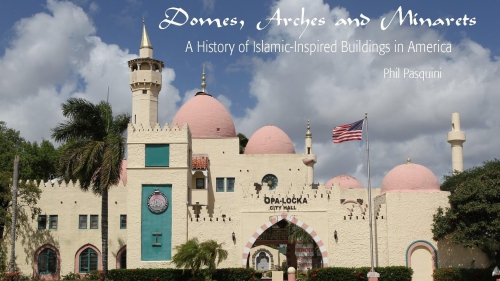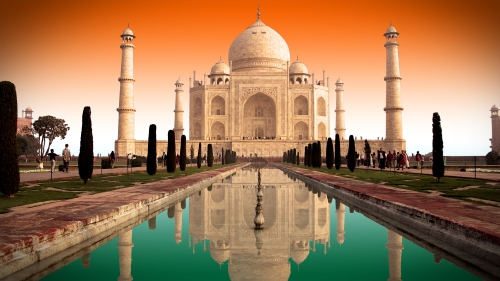Why am I in Love with Islamic Traditional Architecture?

Since my childhood, I had a feeling of inexplicable admiration for Islamic traditional buildings, be they mosques, madrasahs (schools), houses, caravanserais (khans), bazars, and, to some extent, even Sufi khanqahs (tekkes or zawiyahs), mausoleums and tombs. As I grew older and was making Islamic studies, history and civilisation my career path, the feeling was morphing into a mixture of awe, inspiration and exuberance. By the time I was standing on the threshold of delving deeper into the realm of intellectual profundities and intricacies, I was experiencing a passionate love affair with Islamic traditional architecture, both as art and science.
For me, the biggest intellectual mystery and challenge was to discover, unweave and come to terms with the reasons that make Islamic, especially traditional, architectural heritage so mesmerizingly beautiful and appealing. It's been 18 years since that affair had begun and chances are that the same is set to become my ideal lifelong relationship because as things stand now, both Islamic architecture and I reciprocally have so much for each other. We share so much that a separation between us seems as good as impossible indefinitely. While Islamic architecture, universal and timeless as it is, has and selflessly offers an infinite world and treasure of value, meaning and purpose, I, on the other hand, have, and am selflessly ready to put at the former's disposal, my total and unreserved passion, dedication and readiness to incessantly learn from and be infinitely inspired and guided by it.
The following are the main reasons why Islamic traditional architecture is so captivating, elating and mystifying to me (in fact, such holds true for most even casual Muslim observers). Most of such reasons, however, are intrinsic and intuitive, rather than material and palpable, and so, quantifiable. They are furthermore spiritual and intellectual, rather than empirical. Thus, an additional subtle sensory perception, or a sixth sense, is always needed for adequately and sufficiently comprehending and appreciating the multidimensional and multitiered world of Islamic traditional architecture.
1. Islamic traditional architecture (henceforth abbreviated as ITA) embodies the worldview, values and principles of Islam as a comprehensive religion, philosophy and a way of life. ITA signifies a physical manifestation of such worldview, values and principles, that is, their application in a time and space.
2. I, as a Muslim, am to try at all times to subscribe to, embrace and implement the same worldview, values and principles. Thus, the vast world of ITA and my personal existential world run parallel to each other. Accordingly, whenever I observe, use or interact with an element of ITA, I easily identify myself and my little world with the imposing presence and complex world of the latter.
3. I easily establish a spiritual, emotional and intellectual relationship with ITA. Our worlds are at peace with one another, supporting and complementing, rather than conflicting or debilitating, one another. Indeed, the existence of sound and reciprocal spiritual, emotional and cerebral relationships between the built environment and its people is an unmistaken sign of an excellent architecture. When such relationships cease to exist, that will spell the end of all architecture.
4. ITA is a testimony of Muslim centuries old creativity, resourcefulness, quality culture and quest for comprehensive religious, cultural and civilizational excellence. As a Muslim, that makes me happy and proud. It, at the same time, humbles me and generates in me a question of where I stand and what I do to continue the legacy of our predecessors. In other words, in terms of current Muslim civilisation-building enterprises, I often ask myself if I am an asset or a liability.
5. ITA is truly sustainable and an environment friendly phenomenon. When it was perceived, planned and built, the people behind it were fully mindful of its social, economic, cultural, environmental, geographical and religious contexts. ITA integrates itself into its contexts, rather than separating itself from them. It never disregards the implications of those contexts' inviolable intricacies and specifications, nor does it forcefully impose itself upon them. Being fully aware of this tenet, whenever I visit a place with an abundant and rich Islamic architectural heritage, I know all too well that knowing in such a place its ITA would always mean, at least, partially knowing its people and culture, and vice versa; such is the extent and intensity of the mutual relationships between the architectural, environmental and socio-cultural sustainability paradigms within the ITA domain.
6. ITA is so painstakingly, elaborately and exquisitely executed that an insightful and meticulous observer and user can easily feel, and so, appreciate, all the skills, dedication, passion and hard work needed for the accomplishment of planning, building and decoration assignments. My fascination and obsession with ITA is mainly due to the enduring outcomes and effects of such remarkable intellectual and building efforts for which I will always feel indebted and grateful. While beholding and appreciating a building, those individuals who conceived, planned, designed and built it, and who regularly make use of and sustain it on a daily basis, are to be brought to mind first and foremost. Their efforts and hard work are always to be duly appreciated, and their concerns, interests and contentment used as a principal yardstick for an exemplary architecture. Thus, ITA promoted inclusivity and was regularly humanized, or humane, as it were. It was bereft of unnecessary and meaningless formalism, literal symbolism, egocentricity and elitism.
7. ITA is an example of people's art. It is for the people, by the people and from the people. Every Muslim, therefore, can easily identify what connects him with a well-executed ITA building, at any plane of the latter's existence as a concept and a sensory reality.
8. ITA represents the identity and purpose of Islamic presence and culture. It is a microcosm of Islamic civilisation. ITA's strength denotes the latter's strength, and its weakness the latter's deterioration and enfeeblement. In ITA, I always find and see a part of my own self: my identity, mission and purpose.
9. In its finite terrestrial contexts, ITA personifies some of the foremost principles of the heavenly existential paradigms, such as balance, equilibrium, harmony, symmetry, unity and proper functionality. Everything is rendered fully serviceable to the Will and Plan of One and Only Creator and Master of the universe. That is to say, everything is placed at the complete disposal of Truth and its metaphysical interests and goals. The whole physical world is but a means of, and an arena for, the attainment of the objectives of the spiritual world. When I study or use ITA, I always see it as fully conforming to the greatest spiritual existential patterns, to which even I and everything else belong. In that sense, I identify myself with ITA, so to speak. We are both acts of creation, existing in order to serve a higher and more sophisticated order of things and meanings. Moreover, I always perceive the whole of Islamic built environment as a window into a critical segment of my own soul and being, trying to unearth and solve the latter's new mysteries. This is so because, in general, Islamic built environment primarily exists in order to promote, foster and facilitate Muslims' numerous and lifelong worship ('ibadah) practices. It is a physical locus of the latter. It is a "mosque", in the sense that it is a place of worship. It stands to reason, therefore, that my years-long obsession with ITA, coupled with my scrupulous academic exploration of it, was in many ways a journey of self-discovery. ITA, it goes without saying, exudes effortlessly an aura of peace, tranquillity, inquisitiveness and awe, all at once. It also soothes and inspires. It is a therapy for the soul and a stimulus for the mind.
10. By virtue of being a framework for human predominantly conscious life activities, ITA clearly suggests that the Muslims of earlier times were experiencing, enjoying and appreciating life better than the Muslims of recent and modern times when Muslim architectural ingenuity and resourcefulness -- and with them ITA -- started to rapidly decline and lose the way. It was owing to that, in the main, that earlier Muslim designers, structural engineers, artists and craftsmen made recourse to almost every design and decorative possibility, and whenever possible, to express their profound and thrilling perception, appreciation and celebration of life and its great many physical and metaphysical realities. The whole body of ITA, in effect, was turned into a repository of structural, artistic, decorative and functional ideas, results, validations, intellections and attestations to the mentioned ideas and emotions. Studying ITA, it follows, also signifies penetrating and reading the repository in question. It signifies an act of personal enrichment and intellectual as well as spiritual regeneration. It was in consequence of this, for example, that ITA is usually known for its lavish and intricate decorative systems, painstaking attention to detail and accuracy, heavy use of ornaments and curvy lines, and use of bright and high-contrast colours. At any rate, ITA exuberantly treasures and celebrates the metaphysical truths with neither naturalising nor humanising any of them. In the same vein, it endorses, and even somewhat extols, the real meaning and value of both man and the natural world, albeit without idolising or deifying any aspect of their relative and so, fleeting selves and existence.
11. Lastly – and perhaps most importantly – I am in love with ITA because it is an “endangered” architectural marvel or type. Just as it rapidly deteriorates and disappears by the day from the Muslim cultural and civilizational scene, so do my melancholy and affection for it proportionally grow. The depressing feeling is exacerbated by both witnessing and using the inadequate architectural alternatives that many Muslims across the world are increasingly resorting to. In all honesty, the problem is not only about losing ITA; it is about pervasive spiritual and intellectual deficiencies that dictated ITA’s unfortunate fate. Further, it is about the spiritual and intellectual flaws and inabilities that blind many Muslims, incapacitating them from upholding the true value of ITA, and realizing that it could be as good and glorious today and tomorrow as it was yesteryear. In passing, this by no means is a symptom of an excessively romanticized view of the past; nor is it an after-effect of being stuck in those long-gone and outdated times and their architectural legacies. Rather, this is about voicing disapproval about the state of contemporary architecture in most of the Muslim world which, while questioning, rejecting and waging continuous and merciless wars on Islamic cultural and architectural traditions, offers very little either truly genuine or sustainable insofar as the interests and total wellbeing of Muslims and their societies are concerned. Such adopted – or imposed -- modern architectural alternatives of modernized Muslim societies have furthermore been proven to be generally tasteless, uninspiring, unsustainable, alien and utterly insensitive to the local environments and frameworks. Yet, there is little synchronized initiative or action plan to remedy or improve the situation. Absolutely, reviewing and gradually regenerating and modernizing ITA, cleverly and resourcefully injecting it with the elements of dynamism, flexibility, originality, truthfulness, a visionary disposition and a sense of direction, will be a step in the right direction. It is unthinkable that ITA was excellent and perfectly functional for many centuries, then all of a sudden it turned defective, impractical, old-fashioned and obsolete. As a matter of fact, the problem was never with ITA; it was with Muslims who failed to duly revitalize, renew, advance and even transform the transformable of ITA, bringing it up to date and making it capable of successfully tackling and solving the mounting built environment problems and challenges faced by contemporary Muslim societies. The blame for the downfall of ITA is thus not to be laid at ITA’s door, but at the door of the spiritual and intellectual incapacities and outright fallacies of many Muslims.







